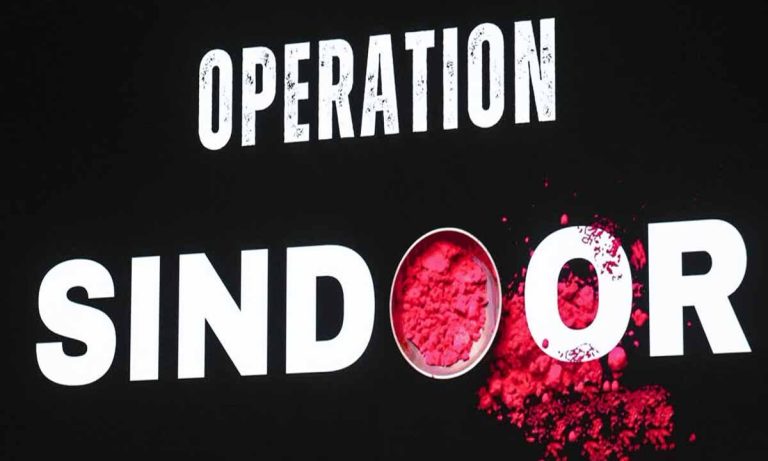The Cyber War Behind Operation Sindoor: Deepfakes and the Battle for Narrative Control
India’s Operation Sindoor, a retaliatory military operation following a deadly terrorist ambush in Pahalgam, has brought to the forefront a new dimension of warfare – the insidious battle for narrative control in the digital realm. While the physical operation unfolded on the ground, a parallel conflict erupted online, characterized by a deluge of deepfakes, manipulated visuals, and strategically disseminated misinformation. This cyber war, fueled by readily accessible advanced technologies, poses a significant threat to regional stability, blurring the lines between truth and propaganda in an already volatile environment.
The aftermath of Operation Sindoor saw social media platforms inundated with a flood of fabricated content, often going viral before verification efforts could catch up. Examples abound: videos falsely depicting Indian airstrikes over Pakistan-occupied Kashmir, explosions misrepresented as recent attacks (when, in reality, they were footage from unrelated global events), and even fabricated depictions of Pakistani strikes on Indian army posts, later debunked as footage from the 2020 Beirut Port explosion. Another instance involved a video falsely attributed to an Indian offensive, revealed to be old footage from Israeli strikes on Gaza. This relentless barrage of manipulated content serves a distinct purpose: to ignite emotional reactions, fuel nationalistic fervor, and destabilize the narrative from both sides of the Indo-Pakistani border.
What distinguishes this wave of misinformation is the sophisticated use of generative technologies like Generative Adversarial Networks (GANs). These AI-powered tools can churn out incredibly realistic fake content with remarkable speed and ease, making deepfakes increasingly difficult to detect. This presents a formidable challenge to national security, public discourse, and democratic institutions, potentially eroding trust in information sources and exacerbating existing tensions. The speed at which this fabricated content spreads, coupled with the emotional impact it generates, allows it to outpace traditional fact-checking mechanisms, creating a significant window of opportunity for malicious actors to influence public perception.
The escalating sophistication of these technologies demands an urgent and coordinated response, transcending the capabilities of individual nations. Digital transformation expert Jaspreet Bindra, in an interview with The Hans India, emphasized the necessity of a multifaceted approach to combat this growing menace of synthetic media. "Technology, regulation, education and social action must join forces to tackle this serious problem," he stated, advocating for a combination of technological solutions, robust policy frameworks, and widespread media literacy. This holistic strategy recognizes that technological countermeasures alone are insufficient; addressing the root causes of misinformation requires a concerted effort across multiple sectors.
Bindra’s assessment highlights the need for a multi-pronged strategy. He advocates for stringent policy frameworks at both national and international levels to regulate the misuse of AI-powered manipulation technologies. Simultaneously, increased investment in AI-powered detection mechanisms is crucial to identify and flag deepfakes and other manipulated content. Furthermore, he stresses the importance of collective responsibility among social media platforms, governments, and civil society organizations. Platforms must enhance their content moderation efforts, governments need to implement effective regulations, and civil society organizations must play a role in educating the public and promoting critical thinking skills.
A crucial pillar of this comprehensive strategy is education. Bindra, along with other experts, emphasizes the importance of incorporating media literacy into school and college curricula. Equipping young people, particularly digital natives, with the skills to discern manipulation and identify misinformation from an early age is paramount. This involves developing critical thinking skills, fostering a healthy skepticism towards online content, and empowering individuals to verify information before accepting it as truth. In essence, fostering a generation of informed and responsible digital citizens is essential to counter the pervasive influence of misinformation. Operation Sindoor, while a demonstration of India’s military might, has inadvertently revealed a new frontier of conflict – one where narratives, emotions, and perceptions are weaponized. This battle transcends geographical boundaries and traditional battlefields. In the age of AI-generated misinformation and rapid online dissemination, the fight for truth and trust has shifted online, and it will undoubtedly shape how future conflicts are perceived and remembered. This new reality underscores the urgent need for international cooperation, technological advancements in detection and verification, and a global commitment to media literacy to safeguard the integrity of information and maintain social stability in an increasingly interconnected world.


